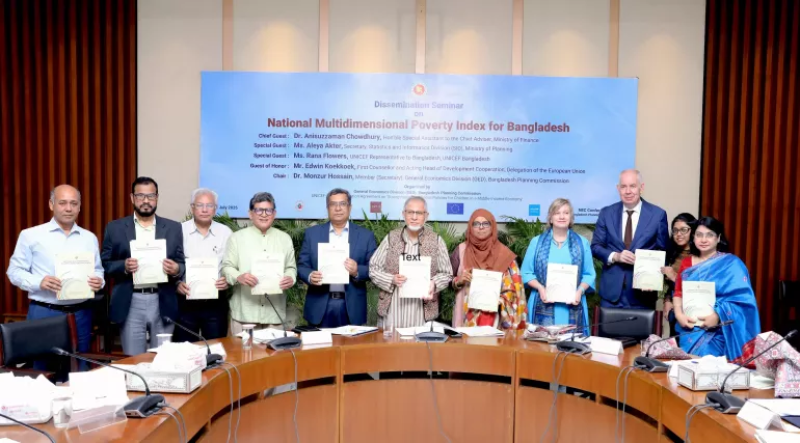- Trump considering military options on Greenland; Europe rejects |
- Fertiliser crunch threatens Kushtia’s onion boom despite high prices |
- Security Council Divided on United States' Venezuela Action |
- Over 1.53m voters register for postal balloting: Shafiqul Alam |
- Bangladesh Bank to liquidate 9 NBFIs in financial sector reforms |
Nearly One-Third of Children in Bangladesh Face Severe Poverty

Nearly 29% of children in Bangladesh are living in multidimensional poverty, significantly higher than the rate for adults at 21.4%, according to the newly released National Multidimensional Poverty Index (MPI). This highlights a stark disparity in how poverty affects children, who are disproportionately impacted by overlapping deprivations.
The MPI, released by the General Economics Division (GED) with support from UNICEF and the European Union, reveals that over 39 million people in Bangladesh face multidimensional poverty. Unlike income-based measures, the MPI assesses multiple, simultaneous challenges including poor health, inadequate nutrition, lack of education, unsafe housing, and limited access to basic services. A person is considered multidimensionally poor if they are affected by at least two such factors.
Children are found to be 35% more likely than adults to experience multidimensional poverty, and the problem is more acute in rural areas. School attendance emerges as the single largest contributor, underscoring education as a critical factor in the poverty cycle.
UNICEF officials stress the need for targeted action based on reliable data to reduce child poverty. “With three in ten children affected, we now have the data to design better policies and prioritise investments,” said Rana Flowers, UNICEF Representative in Bangladesh.
The report also exposes deep regional disparities. In five districts—Bandarban, Cox’s Bazar, Sunamganj, Rangamati, and Bhola—over 40% of people live in multidimensional poverty, with Bandarban having the highest district rate at 65.4%. Sylhet division recorded the highest rate among divisions at 37.7%. Child poverty is especially concentrated in eastern districts like Chattogram and Sylhet, while monetary poverty is more prevalent in the north.
Policymakers are urged to use MPI insights to identify the underlying causes of poverty in specific areas. Dr Anisuzzaman Chowdhury, Special Assistant to the Chief Adviser, emphasised the importance of understanding not just where poverty exists, but why.
Obstacles such as inflation, sectoral miscoordination, and recent civil unrest are slowing progress. Development experts are calling for a renewed commitment to both global best practices and successful local innovations, including Bangladesh’s graduation programmes.
To combat child poverty, UNICEF urges the interim and future governments to use MPI data to drive policy reforms and resource allocation, especially in areas like education, internet access, housing, sanitation, and clean energy. Special focus is needed on rural poverty hotspots, with investments in water, hygiene, electricity, and quality schooling.
The MPI initiative is a joint effort by GED, UNICEF, the Bangladesh Bureau of Statistics, the EU, and Oxford’s OPHI, aligned with the country’s national development goals and the SDGs.

